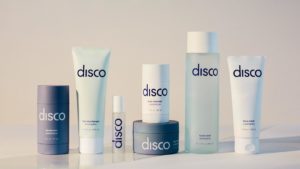Posted: 11 November 2020
Written by: Celia Orozco Cirimbilli
The modern man is taking a keen interest in caring for his skin, and rightfully so, considering our skin is the largest organ in the human body. It carries the burden of a deteriorating environment, harsh UV rays and the addition of toxins absorbed through the products we use.
A market in constant evolution.
The male grooming market is a big ship and according to Research and Markets, it logged US$ 60.6 billion in 2018. This value is expected to exceed US$ 81.2 billion by 2024, with a CAGR (compound annual growth rate) of 5% between 2019 and 2024.
Following Euromonitor International’s data, here are the biggest market areas:

The NPD Group’s studies show that sales of male-targeted skincare products have risen by 7% in 2018 and many markets experienced the same level of growth in 2019.
In recent years, we have witnessed a change in masculinity. Gender stereotypes are being questioned and men’s beauty standards are fundamentally redefined. Male consumers are not only open to looking better. They adopt broader definitions of manliness, therefore, challenging long-established beauty norms. Consequently, men are embracing novel grooming products and extending their routines to include more sophisticated formulations. They are moving beyond the basic shaving regimen into the realm of serums and toners. In response to this quest of personalization, brands such as L’Oréal, Nivea, Dove and Biotherm, to name only a few, have launched male specific skincare product ranges.
Towards wellness.
However, men are not only looking for products specifically designed to hydrate and protect their skin. Just like women, they are now looking for an open dialogue about health and wellness. Moreover, self-care is finding a new audience. The perception grows that how you care for your physical self also impacts your mental and emotional well-being. Self-care is now seen more as a necessity than as an indulgence. As such, we are seeing more brands linking mental well-being, prevention and self-care within their cosmetic product claims. Futhermore, the men attitudes towards ingredients is also changing, according to Mintel, in April 2019, 46% of men want their routine to be “clean”. In answer to the consumer’s demand for clean beauty and more variety, the market is focusing on sustainability, high-quality ingredients, natural/organic formulations and clean labels.
For example, back in February 2020, the skincare brand Fabric created a line of cosmetics allying grooming purposes with a holistic approach. Their products use ingredients known for protecting the skin against UV exposure or for their anti-bacterial and anti-inflammatory effects. Whilst in March, the brand called Disco launched its products range with a focus on being natural. Their ingredients, which are vegan, cruelty-free and sustainable, have properties that range from hydrating to fighting against bacteria.
- Fabric Range
- Disco Range
What will be the next step in male’s beauty?
As the male’s grooming sector has developed, brands have started to cater to a broader spectrum of consumer’s need. Now, it is time to take it to the next level. One area of the market where further development is possible is mass retail. It would appear, that despite an increasing interest in male focused brands, mass market retailers continue to have limited availability of those specific products. Another step might be for the brands to meet the needs of even more people by tailoring their range based on skin tones and types and not only based on dry or oily. However, we can all agree that the men’s grooming market have been on a fast-paced evolution over the last 20 years. The experts all concord; there is still more that can be done. They expect cosmetic products to become routine for most men.

